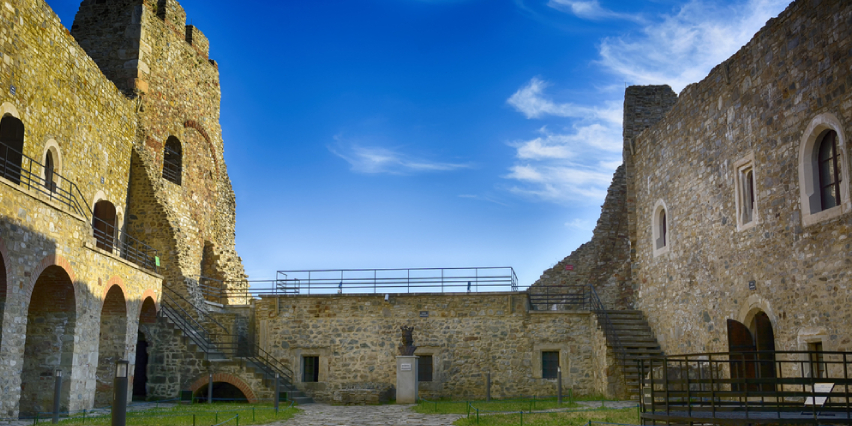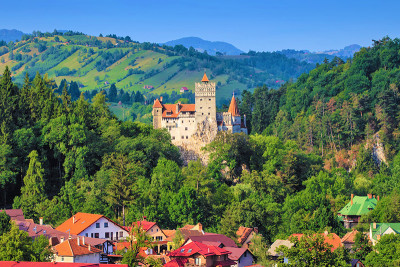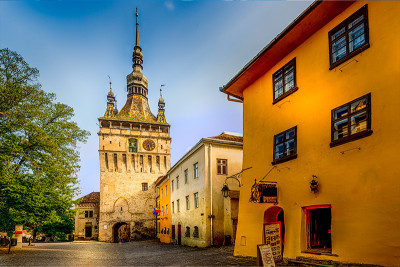Neamt Citadel (Cetatea Neamt or Cetatea Neamtului) with its near perfect vertical walls, constructed based on a remarkable engineering design, proved to be indestructible. Even Muhammad II, the conqueror of Constantinople, was kept outside the city by the great walls.
The construction of the medieval fortress started during Peter I of Moldova’s reign, but developed further during the reign of Stephen the Great. The citadel was part of Moldavia’s defense system and was built to withstand attack from enemy. One of the glory moments of the fortress was in 1961. That year, the Poles led by Ioan Sobieski launched an attack, but the Neamt Citadel prevented them from passing; the impenetrable fortress protected the city.
A famous Romanian writer from the 19th century, Costache Negruzzi, described this battle in his work. The novelette is called “Sobieski si Romanii” (Sobieski and the Romanians). A film with the same name depicting the battle was also produced, under the direction of Emil Garleanu.
The fortress of Neamt is located in the western part of Targu Neamt and is very often compared to a nest of eagles. Quite right, because this “eagle’s nest” was attacked by enemies for many years.
During the reign of Peter I, a central square-shaped fort was built. Thick walls of 2-3 meters and 12 meters high were built over this foundation. The walls were provided with battlements and cannons, to ensure protection on every corner.
The second stage of the construction was done during the reign of Stephen the Great, when 800 square meters of exterior courtyard and new defense walls were assigned to the fortress. During the same period, the old walls were raised by adding more rows of stones (almost 20 meters) and a large defense entrenchment of 15 meters long and 25 meters was dug.
A high bridge leads the way into the fortress. 11 stone pillars, that were previously restored, are supporting the bridge.
A Visit To Neamt Citadel…
A brief history of the fortress is written on one of the walls in the courtyard. You can learn interesting facts about it: the fact that the fortress was built during the consolidation of the medieval state of Moldova, during the time of Peter I Musat (1375-1391). The first documentary attestation of Neamt Citadel dates from 1395, during a military expedition carried out by Sigismund of Luxembourg, King of Hungary, to Moldavia, before being defeated.
The place was subjected to restoration works carried out between 2007-2009, so that the fortress regained its grandeur, this time not as a military objective, but as a historical monument and a place of interest for tourists.
The courtyard of the fortress attracts by its designed: several alleys paved with stone lead you to the main areas of visit and the lawn completes the free spaces. From place to place information panels appear, so that the visit to the fortress is instantly transformed into a history lesson for those who have the patience to read the details presented on each corner of the fort.
A bust statue of the Lord of Moldova is exhibited on the left side of the courtyard, along with four information panels: Petru I Musatinul – “the founder of the fortress”, Stefan I – “the winner from Hindau”, Stefan cel Mare – “the protector of Moldova” and Vasile Lupu “the last great founder”. On the opposite side of the courtyard, on the northern side, there is a second entrance to the fortress.
What To Explore Once You Arrive At The Fortress
The prison – You will discover an exhibition of dummies, meant to display the harsh conditions under which the prisoners were kept. You can also experience the feelings that such a place has to offer: cold, fear of death, lack of air, humidity. The bloody vestments of these dummies, fake rats, as well as heavy chains complete a sinister picture that highlights the torture faced by the enemies or villains locked away within these walls.
Monetary – Here you can see examples of coins from different periods. Also, you will learn that an illegal mint operated here between 1662 and 1672, until Gheorghe Duca was dethroned for issuing counterfeit money. Among the coins that have been found in an archaeological dig in the fortress are mentioned those issued by the kings of Poland, Prussia, the German Duchies or Austria between 1622-1698.
Supply room – A room full of barrels. Near the supply room you will find the kitchen, closed with bars. In the middle of the kitchen a large table with chairs, a stove and a few clay pots can be seen.
Lapidarium – The plans of the Neamt Fortress are exhibited in this place – a quadrilateral with unequal sides, but also presentations of some other fortresses that were part of the fortification system in Moldova during the 14th – 16th centuries. The cities of Tighina, Hotin, Orheiul Vechi, Craciuna or the New Roman Fortress can also be mentioned.
The Armory – Here you can see copies of the weapons used during the glory days of the fortress. A classification of the weapons is displayed on an informative board, these being divided into offensive weapons (cutting, throwing or striking), self-defense weapons or firearms. Not far away a closed tunnel with bars leads to e secret exit.
These are just some of the rooms that you will find in the Citadel of Neamt. The fortress is one the most beautiful tourist attractions in Romania. Perched on a hill, the fortified complex offers an amazing panorama hard not to fall in love with. The arched bridge seems to float on clouds, leading you to the gate of the fortress above which the proud emblem of Moldova stands.

 ES
ES
 IT
IT
 DE
DE
 FR
FR


